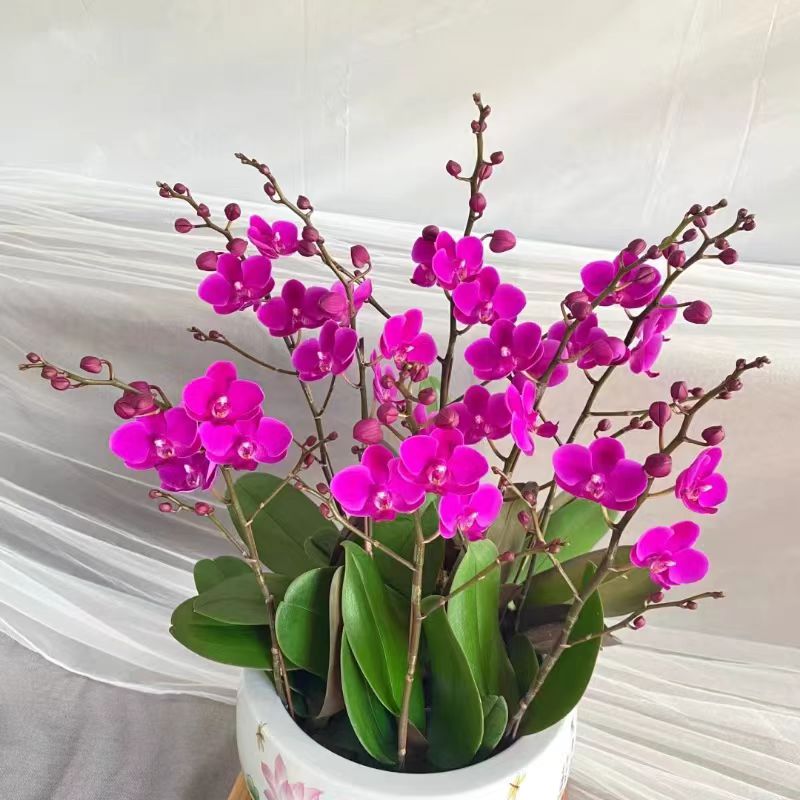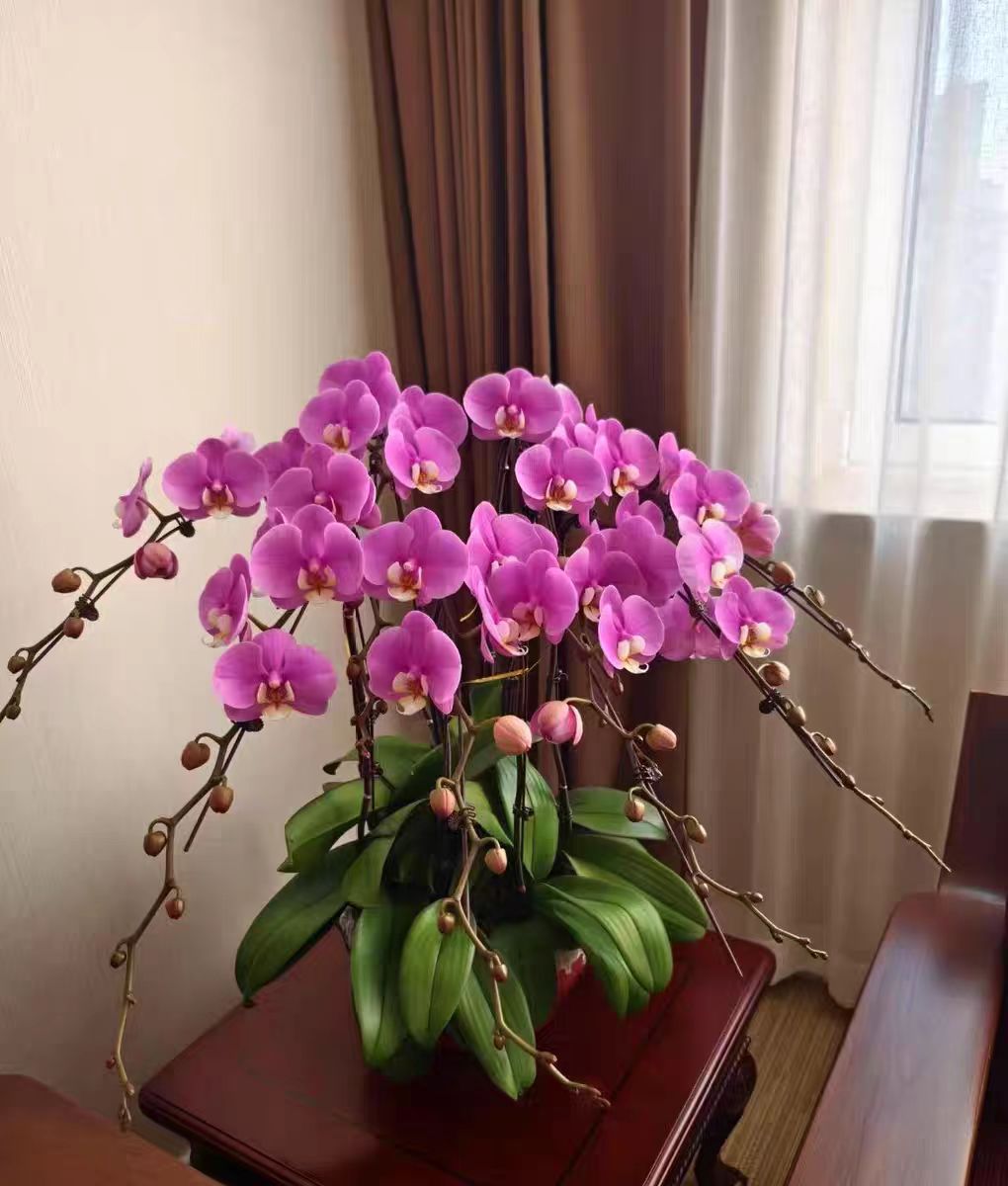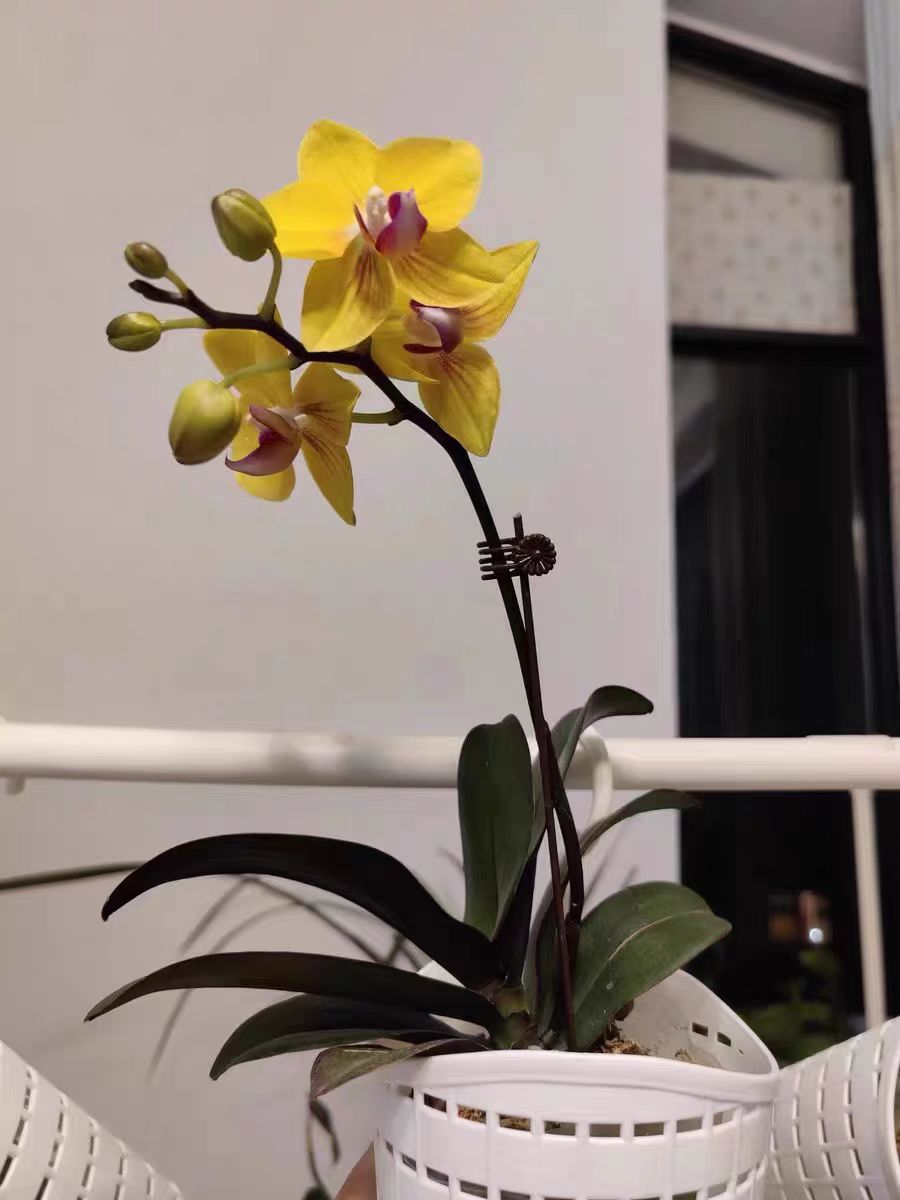In the journey of cultivating Phalaenopsis, "repotting" is a crucial step, which bears the mission of maintaining the vigorous vitality of Phalaenopsis. So, what exactly does it mean to repot Phalaenopsis?
Simply put, repotting Phalaenopsis is the process of taking the Phalaenopsis out of the original growing medium, replacing it with a new one, and replanting it into a suitable container. This operation is not arbitrary but a necessary measure based on the growth requirements of Phalaenopsis. As time goes by, the original growing medium will gradually decompose and age, with its air permeability and water retention ability deteriorating, and it can no longer provide a good growing environment for the roots of Phalaenopsis. Moreover, the roots will spread continuously during the growth process, and the space in the original container may become cramped, restricting the further development of the roots. Repotting is like starting a new life for Phalaenopsis, giving it a more comfortable "home" and helping it grow healthily.
Repotting Phalaenopsis requires mastering scientific methods, which will be introduced in detail below.
Select the right timing: The best time for repotting is after the flowering period. At this time, Phalaenopsis has consumed a large amount of nutrients and is about to enter a relatively slow growth stage. Repotting causes less damage to it, and the plant also has enough time to recover during the subsequent growth peak season. Avoid repotting during the high-temperature and high-humidity seasons or when Phalaenopsis is in the vigorous growth period, so as not to affect the survival rate.
Prepare materials: Prepare new growing media, such as water moss with good air permeability, pieces of bark, etc. Water moss has excellent water retention ability, and pieces of bark have strong air permeability, both of which are very suitable for the growth of the roots of Phalaenopsis. Also, prepare a flower pot of the right size. The flower pot should have drainage holes to prevent waterlogging and root rot. In addition, prepare disinfected tools such as scissors and tweezers. Take out the plant: Carefully take the Phalaenopsis out of the original flower pot. If the medium is dry, you can first water a small amount to make it moist for easier operation. Gently tap the outer wall of the flower pot with your hand to loosen the medium, and then hold the base of the plant and slowly pull it out. Be careful not to damage the roots. If the roots are tightly entangled with the medium, you can carefully separate them with tweezers.
Prune the roots: Place the removed Phalaenopsis in a cool and ventilated place, and use scissors to cut off the rotten, shriveled, and overly long roots. Healthy roots are white or light yellow, while rotten roots are mostly black or brown and have a soft texture. Pruning the roots can stimulate the growth of new roots and make the plant healthier. After pruning, you can soak the roots in a diluted carbendazim solution for disinfection for 5 - 10 minutes, and then take them out and let them dry.
Potting: Lay a layer of medium at the bottom of the flower pot, accounting for about one-third of the height of the flower pot. Place the Phalaenopsis plant in the center of the flower pot, hold the plant upright with one hand, and add the medium with the other hand. Gently lift the plant upward while adding the medium to ensure that the roots are in full contact with the medium. Fill the medium to the base of the plant and gently compact it, but do not compact it too tightly to avoid affecting the root respiration.
Water the fixing water: After planting, water the fixing water once. Water thoroughly to make the medium fully moist, but there should be no waterlogging. You can place the flower pot in a well-ventilated place, away from direct sunlight, and wait for the plant to adapt to the new environment.
Repotting Phalaenopsis is an important step in the cultivation process. During the repotting process, be careful and patient to ensure that every step is correct. As long as you master the meaning and correct method of repotting, you can help Phalaenopsis thrive in the new environment.
What does it mean to repot Phalaenopsis?

Share with
Tagged in :




Leave a Reply